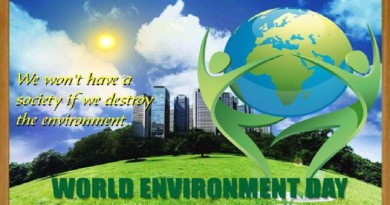World Meteorological Congress approves Global Greenhouse Gas Watch
In a landmark decision, the World Meteorological Congress has approved a new greenhouse gas monitoring initiative to support urgent action to reduce heat-trapping gases which are fuelling temperature increase.
The new Global Greenhouse Gas Watch will fill critical information gaps and provide an integrated, operational framework which brings under one roof all space-based and surface-based observing systems, as well as modelling and data assimilation capabilities.
The Congress resolution endorsing the establishment of the Global Greenhouse Gas Watch received unanimous support from WMO’s 193 Members. It recognizes “the growing societal importance of greenhouse gas monitoring in support of improving our scientific understanding of the Earth System, and the urgent need to strengthen the scientific underpinning of mitigation actions taken by the Parties to the United Nations Framework Convention on Climate Change (UNFCCC) and the Paris Agreement.”
It will build on WMO’s experience in coordinating international collaboration in weather prediction and climate analysis and on long-standing activities in greenhouse gas monitoring and research under the auspices of the Global Atmosphere Watch established in 1989 and its Integrated Global Greenhouse Gas Information System.
Many of the existing international and national activities dealing with greenhouse gases are supported mainly by the research community. At present, there is no comprehensive, timely international exchange of surface and space-based greenhouse gas observations or modelling products.
Record greenhouse gas levels
How well do we understand the CO2 fluxes“ We know from our measurements that greenhouse gas concentrations are at record levels – in fact higher than at any time over the last 800,000 years,” said WMO Secretary-General Prof Petteri Taalas. “The increase in carbon dioxide levels from 2020 to 2021 was higher than the average growth rate over the past decade and methane saw the biggest year-on-year jump since measurements started,”
“But there are still uncertainties, especially regarding the role in the carbon cycle of the ocean, the land biosphere and the permafrost areas,” said Prof. Taalas. “We therefore need to undertake greenhouse gas monitoring within an integrated Earth System framework in order to be able to account for natural sources and sinks, both as they currently operate and as they will change as a result of a changing climate. This will provide vital information and support for implementation of the Paris Agreement,” he said.
“WMO’s decision on the generational challenge of climate change mitigation is a historic step”, said Dr Lars Peter Riishojgaard, Deputy Director, WMO Infrastructure Department.
“Internationally coordinated global greenhouse gas monitoring open to all and operating under WMO’s policy of free and unrestricted exchange of data will provide valuable, timely and authoritative information on greenhouse gas fluxes to the UNFCCC Parties, which will help them in their efforts to mitigate climate change”, said Dr. Riishojggard.
”There is very strong support from the science community and private sector for the new Global Greenhouse Gas Watch,” said Dr Riishojgaard.
The Congress decision followed a resolution by Executive Council in March and this in turn was informed by the outcomes of an international symposium in January 2023 which brought together more than 170 experts from research and operational communities, space agencies, meteorological services, the ocean and climate observing communities, academia, and UN partners.
Global Greenhouse Gas Watch envisages a top-down approach to the flux evaluation which builds on existing capabilities in surface- and space-based observations and modelling and ensures timely exchange of all observations and data.
Global coordination efforts of the type that is needed for the development of these infrastructure has proved successful in weather prediction and climate monitoring and is embodied by WMO’s 60 year-old World Weather Watch and its acclaimed Global Atmosphere Watch.
In its initial configuration, it is envisaged that the Global Greenhouse Gas Watch will consist of four main components:
A comprehensive sustained, global set of surface-based and satellite-based observations2 of CO2, CH4 and N2O concentrations, total column amounts, partial column amounts, vertical profiles, and fluxes and of supporting meteorological, oceanic, and terrestrial variables, internationally exchanged as rapidly as possible, pending capabilities and agreements with the system operators;
Prior estimates of the GHG emissions based on activity data and process-based models;
A set of global high-resolution Earth System models representing GHG cycles;
Associated with the models, data assimilation systems that optimally combine the observations with model calculations to generate products of higher accuracy.
As an output the infrastructure will produce gridded net monthly fluxes of CO2, CH4 and N2O at the special resolution of 100 km by 100 km with a minimum possible delay. These outputs can drive multiple applications from contribution to the global stocktake to assessment of the fluxes from individual facilities or landscapes.
Credit: WMO




